1) The Isle of Muck, Inner Hebrides
The tiny Isle of Muck is home to a population of 30 people, and measure only 2.5 miles from east to west. Muck is a privately owned island, and has been in the possession of the McEwen family since 1896. There are a number of wild horses on the island, which can often be found on the island’s tranquil beaches.
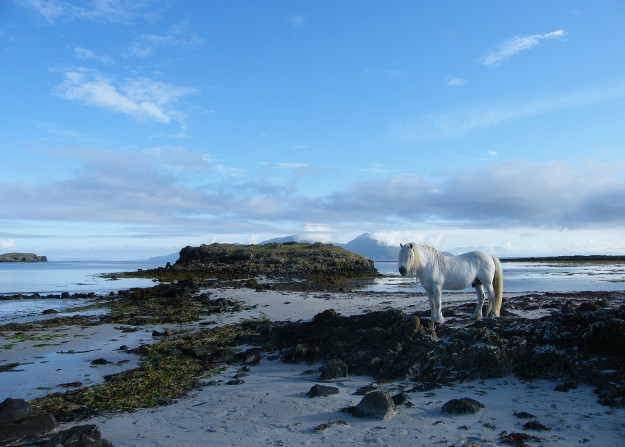
Wild Horse on the Isle of Muck.

2) Isle of Harris, Outer Hebrides
Oddly, though often referred to as the ‘Isle of Harris’, it isn’t actually an island itself. Harris is the southern part of Lewis and Harris, the largest island in the Outer Hebrides. Harris is famed for it’s stunning white sandy beaches. It’s also an area that has managed to retain a strong Gaelic identity, with 60% of the population being able to speak the ancient Scottish language.
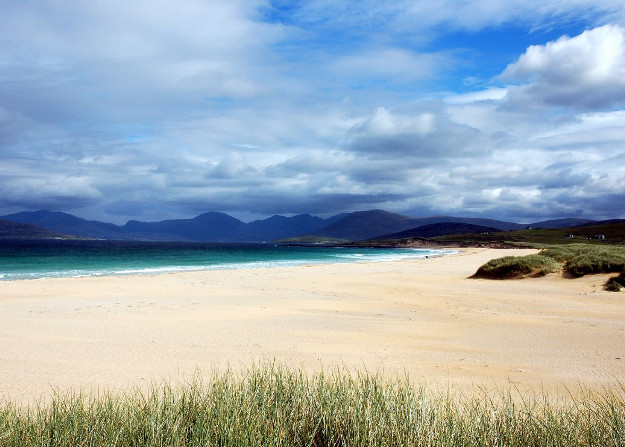
The White Sands of Harris.
3) Isle of Barra, Outer Hebrides
With a population of around 1174 people, Barra is one of the more southerly island in the Outer Hebrides. Despite the Scottish Protestant Reformation of the 16th Century, the Isle of Barra remained predominantly Catholic. A white marble statue depicting ‘Madonna and Child’ can be found on the island’s highest elevation.
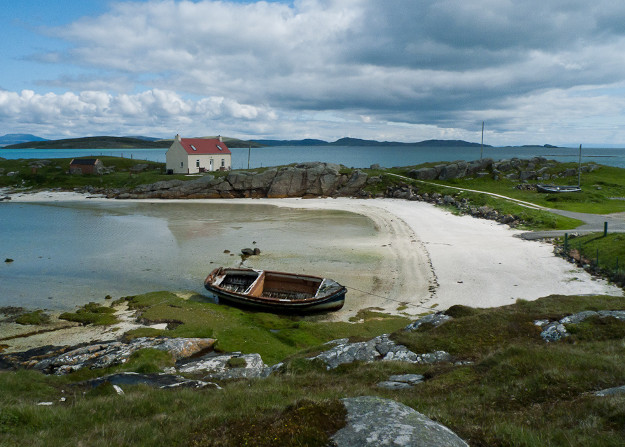
The Isle of Barra.
 by Simaron
by Simaron
4) Isle of Harris, Outer Hebrides
Sadly the population of areas such the Isle of Harris has been in decline for some decades. In 1951, Harris reported a population of 3121 people, by 2011 this was down to 1625 people. This population decline has led to scenes like the one in the photo below increasingly common.
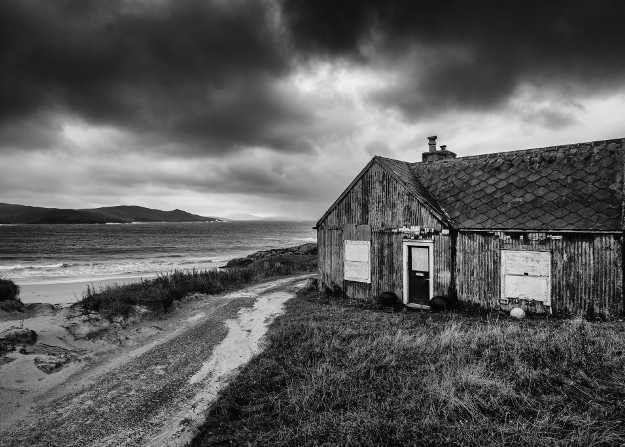
Abandoned Cottage, Isle of Harris.

5) Lunga, Southern Hebrides
Lunga is a small island which lies off Mull, and is part of a larger group of islands known as the Treshnish Isles. These days the islands are uninhabited by humans, and the main residents are sea birds. An impressive population of over 6000 guillemots, puffin, razorbill, kittiwake, fulmar, and skuas now call the island home.
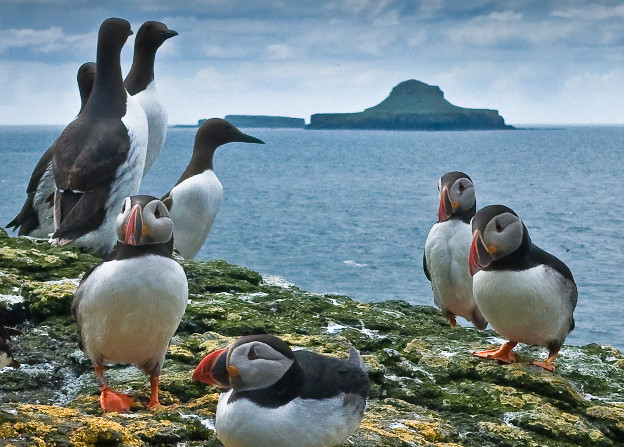
Lunga a Mecca for Bird Watchers.

6) Isle of Eigg, Inner Hebrides
Eigg is a small island barely 3 miles wide lying to the south of it’s larger neighbour, the Isle of Skye. The whole island is dominated by a dramatic rock formation known as An Sgurr which rises to 1289 feet. In 2005 this tiny island reported a population of 85 people.
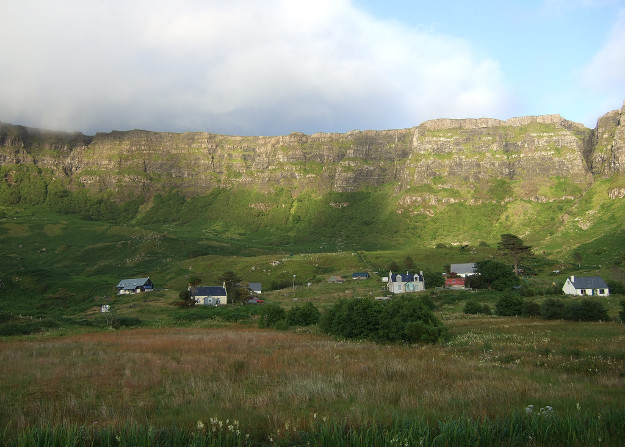
Cleadale The Main Settlement on the Isle of Eigg.
 by rightee
by rightee
7) Lewis, Outer Hebrides
The Isle of Lewis is not an island in it’s own right, but rather the northern part of Lewis and Harris, which is the largest island in the Outer Hebrides. Lewis has managed to retain a strong identity, separate from mainland Scotland, with Sabbath observance and the Gaelic language still playing an important role in local culture.
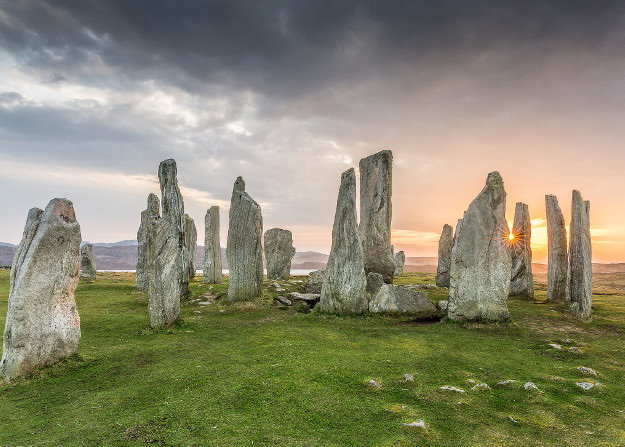
The Callanish Stones, Isle of Lewis.
 by Christopher Combe Photography
by Christopher Combe Photography
8) South Uist, Outer Hebrides
South Uist is one of the more southerly islands of the Outer Hebrides, and like it’s neighbour of Barra, it’s predominately Roman Catholic with a strong Gaelic identity. In the 1840’s many of the island’s residents were evicted and shipped off to Canada to make way for sheep grazing.
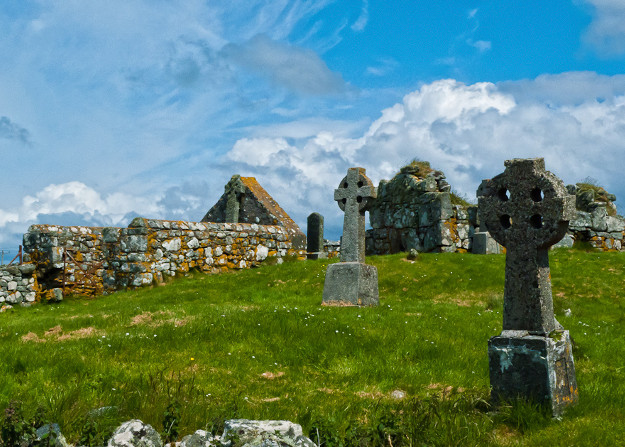
Howmore Chapel, South Uist.
 by Simaron
by Simaron
9) Tiree, Inner Hebrides
Tiree is the most westerly island of the Inner Hebrides. The island has a population of 650 people, and the locals rely on crofting, tourism, and fishing for an income. A bonus point for those living on the island, is the fact that the island enjoys relatively high total hours of sunshine in Spring and Summer when compared to the mainland.
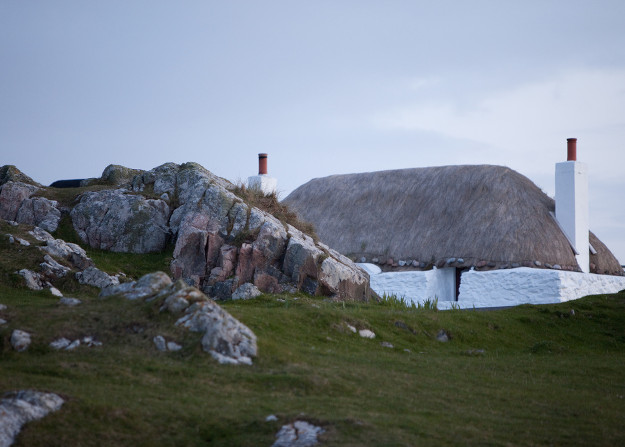
Thatched Cottage, Isle of Tiree
 by MacJewell
by MacJewell
10) Isle of Mull, Inner Hebrides
Mull is the 2nd largest island in the Inner Hebrides after Skye, and in the 2011 census reported a population of 2800 people. The population of the island swells in summer, as the island is a popular tourist destination famed for it’s tranquil wilderness, whisky production, and brightly painted main town of Tobermory.
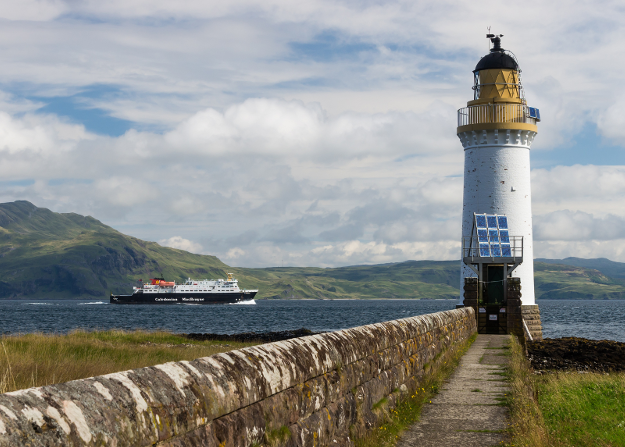
Mull, the 2nd Largest Island of the Inner Hebrides.
 by User:Colin
by User:Colin
